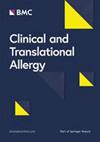Globally, many pollen monitoring networks provide the community with daily pollen information, but there are limited data on health consumer uses and benefits. This research investigated why individuals in the community access pollen information, how they use it, and the perceived benefits.
In- and post-pollen season surveys (2017–2018 and 2018–2019) enquired about symptoms, diagnoses, symptom management, access, benefits and usefulness of pollen information provided by the AusPollen Partnership. Open text responses were examined by thematic analysis. Theme frequency and quantitative data were compared across pollen seasons, within and after the season, and between respondents with and without access to AusPollen information.
Surveys were completed 4044 times by 3604 individuals who predominantly self-reported severe and frequent allergic rhinitis symptoms. Local AusPollen information was accessible to 84.6% of participants, and was reportedly used for preparation and planning (34.6%), guiding activities (32.9%), and medication decisions (28.2%). When asked how pollen information helped, similar themes were evident; but 16.1% also mentioned safety for themselves and others. However, secondary analysis of survey responses indicated that self-reported medication use did not differ between those with or without access to pollen information or between time points surveyed. Suggestions for improvement included extended duration (16.4%), wider geographic range (13.5%), and information on other taxa (17.2%).
There was a perceived need for localised, detailed and timely pollen information by people with pollen allergy. Whilst responses suggested this helped inform behaviours linked to allergen avoidance, further education strategies on allergic rhinitis control are needed to support patients who self-manage their condition.


